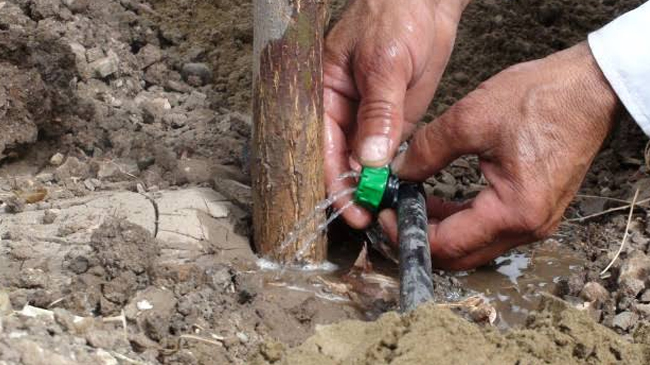
Benefits and Advantages of Drip Irrigation Method
Benefits and Advantages of Drip Irrigation Method
The drip irrigation system is the irrigation method in which water is given directly to the root zone of the grown plants and is done in small droplets with the help of a dispenser dropper. With this method, serious water savings and maximum efficiency are obtained. The system significantly saves water as well as fertilizer. Other benefits; lowers labor costs, shortens energy use and the length of pipelines. Drip irrigation also provides other benefits such as early harvesting, preventing soil erosion, reducing the likelihood of disease spread and weeding. Initially, it became widespread in greenhouse production, then it began to be widely used in the open field for the cultivation of vegetables, fruits and grapes.
Benefits and Advantages of Drip Irrigation Method
It provides irrigation at any time of the day, regardless of wind speed.
With less water applications, it allows cultivation without stress on the plant.
Energy requirement is low due to the possibility of irrigation at low pressures.
It provides a significant increase in quality and efficiency in the product (20–90%).
The crop ripens 2-3 weeks early.
Cultural operations are made easier. The labor requirement is reduced.
Water loss by surface flow and evaporation is very low, providing 50% water savings.
With irrigation, fertilization and spraying are done, and their effectiveness is increasing.
Since diluted fertilizer solution is used, there is no burning problem of the roots.
It provides good soil aeration.
Since it is not possible to wet the entire area, it minimizes the development of diseases and weeds. Hoeing labor is also low.
It prevents erosion and soil loss.
It can be easily applied on sloping areas.
It provides less soil compaction (hardening).
It facilitates irrigation of large areas with very little flow water. It is easy to install and remove.
The usefulness of usable soil water increases. Plants grow better. A quality, efficient and standard product is obtained.
The drippers placed in the pipe at regular intervals ensure that the desired amount of water is delivered to the root of the plant. Plant growth is regular as continuous field capacity is provided with short-interval water applications.
It ensures that even water with high salt content can be used successfully in irrigation. In this way, the damage to plants from salt is also reduced.
It provides 60% fertilizer and spraying savings compared to conventional irrigation methods.
Since it does not create surface flow and deep infiltration, water nutrient losses do not occur.
It allows irrigation even in areas where there is not enough water available.
It allows the plants to have an equal distribution of water and fertilizer, thus maturing and harvesting in one hand.
In agriculture where classical irrigation methods are applied, the plant takes more roots to reach water; However, in this system, since the water is given directly to the root of the plant, the plant does not take root much and the assimilated nutrients go to the product instead of the root.
Since the drip irrigation system reduces the humidity in the air, it significantly prevents diseases and bacteria that spread in a humid environment such as fungi.
The drip irrigation system can be easily made in desired amounts at any time according to the climatic conditions, the special requests of the plants and the development periods.
The drip irrigation system is not affected by wind, rough terrain and temperature fluctuations like other irrigation systems made from the base. It provides 100% homogeneous, equal irrigation.





